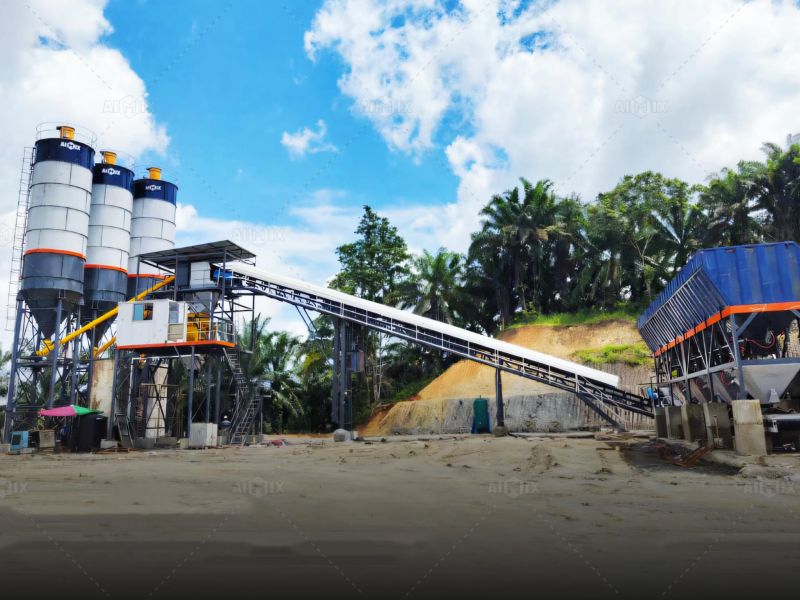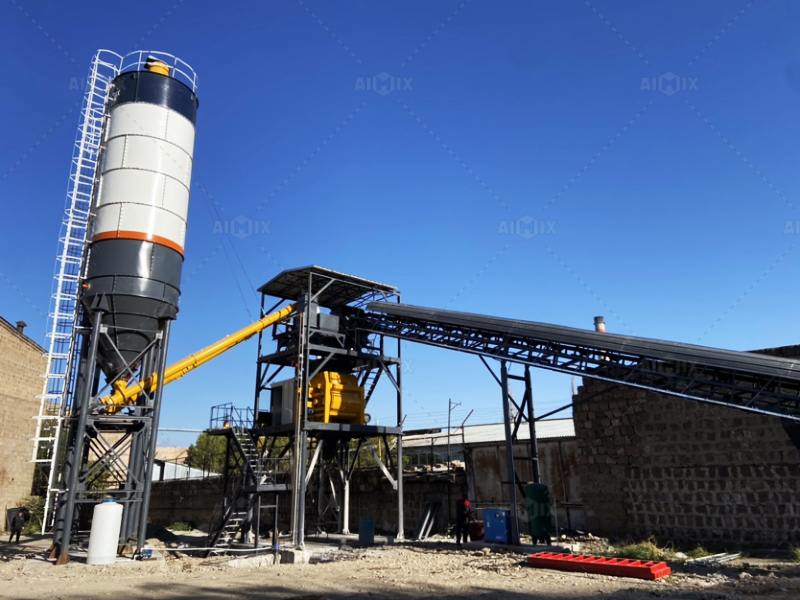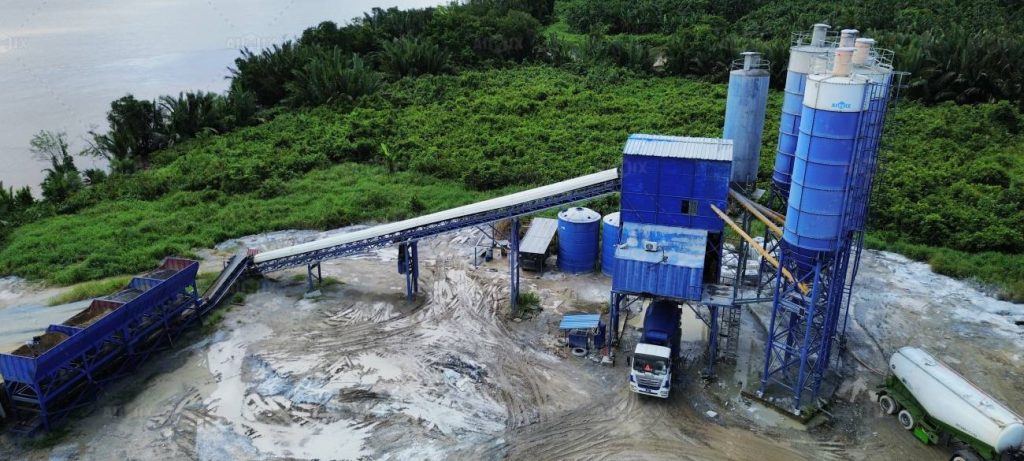Infrastructure development projects, including highways, bridges, and urban construction, require consistent, high-quality concrete production. In such large-scale projects, stationary concrete plants play a critical role by providing reliable, high-capacity concrete batching solutions. These plants are designed for long-term use at fixed sites, offering superior efficiency and consistency compared to mobile alternatives. When paired with mobile concrete batching plants, or when combined with different types of batching plant technologies, stationary plants can meet a wide range of project requirements while optimizing production processes.

Understanding Stationary Concrete Plants
A stationary concrete plant is a permanent facility for mixing, batching, and producing concrete. It typically includes a storage system for cement, aggregates, and water, as well as conveyors, mixers, and automated control systems. The key advantage of stationary plants is their high output capacity and ability to maintain consistent quality over extended periods.
In contrast, mobile concrete batching plants offer flexibility for temporary projects or sites with limited space. While they are ideal for projects requiring relocation, stationary plants are the preferred solution for long-term infrastructure projects due to their stability, durability, and integration with large-scale material handling systems.
Types of Batching Plant and Their Applications
Understanding the types of batching plant available is essential for selecting the right setup for infrastructure development. The most common types include:
-
Ready-Mix Concrete Plant (RMC Plant): Designed for producing high-quality concrete in large quantities, RMC plants are ideal for urban and highway projects.
-
Dry Concrete Batching Plant: In this type, aggregates, cement, and additives are measured and mixed dry, with water added at the job site. It is suitable for remote locations with water limitations.
-
Wet Concrete Batching Plant: Water is added directly in the plant, ensuring better mixing consistency and faster readiness for construction.
-
Mobile Concrete Batching Plant: As mentioned, mobile plants offer flexibility for temporary or multi-site projects, complementing stationary setups for peak demand periods.
Selecting the appropriate type depends on factors such as project scale, site accessibility, concrete specifications, and production requirements. In many cases, infrastructure projects use a combination of stationary concrete plants for the main production and mobile concrete batching plants for supplemental or remote production needs.

Best Practices for Stationary Concrete Plants
Optimized Material Storage and Handling
Efficient storage and handling of raw materials are crucial for consistent concrete quality. Properly designed silos, hoppers, and conveyors reduce material segregation and moisture variation. Implementing automated feeding systems ensures precise proportioning of cement, aggregates, and additives, minimizing human error and improving consistency.
Regular Maintenance of Concrete Batching Plant Machine
A concrete batching plant machine includes mixers, conveyors, and control systems, all of which require regular inspection and maintenance. Preventive maintenance—such as lubrication, component replacement, and system calibration—ensures uninterrupted operation and prolongs equipment life. Proper maintenance also reduces operational costs and prevents downtime, which is critical for large-scale infrastructure projects.
Automation and Control Systems
Modern stationary plants employ sophisticated automation systems for accurate measurement, mixing, and monitoring. These systems allow operators to adjust batch recipes, track production in real time, and generate reports for quality control. Integration with mobile concrete batching plants can further streamline operations across multiple sites, maintaining consistent concrete standards.
Quality Control and Testing
Concrete quality directly impacts the durability and safety of infrastructure projects. Implementing strict testing procedures for aggregates, cement, water, and the final concrete mix is essential. Many stationary plants include on-site laboratories to perform slump tests, compressive strength tests, and other quality checks before delivery to the construction site.
Environmental and Safety Considerations
Stationary concrete plants must comply with environmental regulations regarding dust, noise, and wastewater. Dust collectors, water spray systems, and noise reduction equipment are standard features. Additionally, safety protocols for operators, such as protective equipment and emergency shutdown procedures, are crucial to prevent accidents during high-volume production.

Operational Tips for Efficient Production
Synchronize Delivery Schedules: Coordinate concrete production with project timelines to minimize on-site storage and reduce the risk of concrete setting before placement.
Use High-Performance Mixers: Selecting a reliable concrete batching plant machine with efficient mixing capabilities ensures uniform concrete quality, especially for large infrastructure projects.
Monitor Aggregate Quality: Variations in aggregate size and moisture content can affect mix consistency. Regular monitoring prevents production issues and ensures structural integrity.
Integrate Mobile and Stationary Systems: Combining stationary concrete plants with mobile concrete batching plants provides flexibility for peak demand or multi-site operations. This hybrid approach maximizes efficiency and project coverage.
Conclusion
In modern infrastructure development, stationary concrete plants are indispensable for high-volume, consistent, and efficient concrete production. By understanding the types of batching plant, maintaining concrete batching plant machines, and integrating mobile concrete batching plants when needed, operators can optimize production, improve quality, and reduce operational risks. Adopting best practices and operational tips ensures that stationary plants continue to support large-scale infrastructure projects effectively, meeting both performance and sustainability goals.